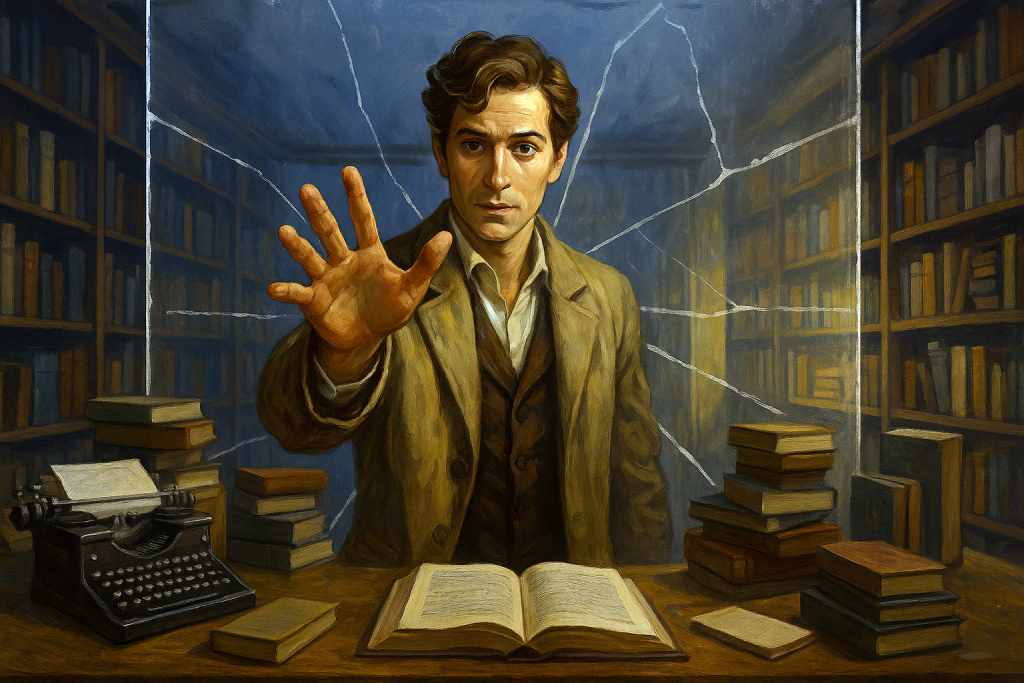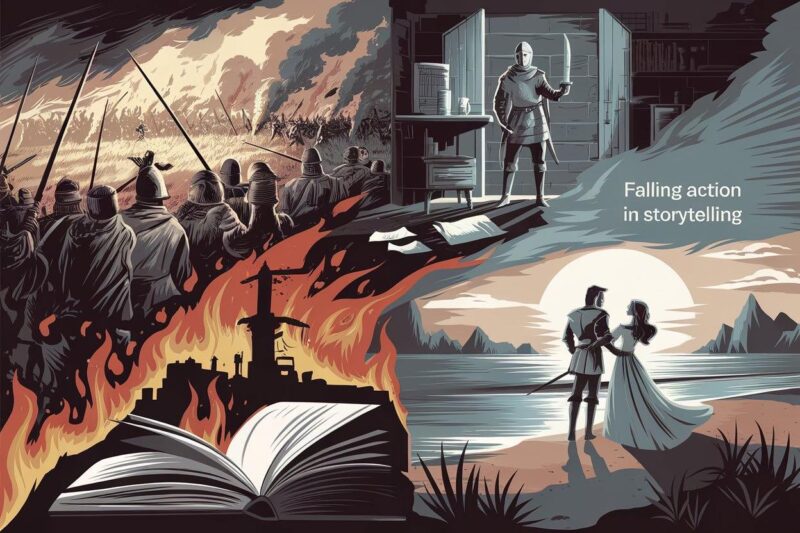The term “fourth wall” originates in theater, where three physical walls frame the stage and an imagined fourth wall separates performers from the audience. In literature, the concept refers to the boundary between the fictional world and the audience outside it. This boundary governs how a work positions its readers: as unseen observers when the wall is intact, or as directly acknowledged participants when the wall is breached.
While rooted in dramatic performance, the idea translates naturally to prose and poetry. A novel, short story, or play text can sustain an immersive illusion by keeping the audience outside the frame of the story. Conversely, it can draw attention to itself as a constructed work by stepping beyond that frame. The fourth wall, therefore, functions as a structural and stylistic device, influencing tone, credibility, and the overall relationship between the author’s voice and the audience.
Breaking the Fourth Wall
The fourth wall serves several key purposes in literary craft. A firm wall maintains illusion, which allows the audience to experience the events and voices of the text without overt intrusion. This immersive effect relies on consistency: the narrative voice remains within the bounds of the fictional world, and the events unfold without direct reference to the audience’s existence.
A breach of the wall, however, shifts the terms of engagement. Through “breaking the fourth wall,” a work can expose its own artifice, create irony, sharpen thematic focus, or question the limits of genre. The choice to maintain or breach the wall is a conscious structural decision, one that alters the tone, credibility, and interpretive possibilities of the work.
Purpose and Risks
When a work engages in breaking the fourth wall, it actively crosses the boundary between the fictional space and the audience. This can serve thematic and structural aims, such as clarifying stakes, signaling a turning point, or experimenting with narrative form. It can also create a sense of intimacy or complicity, making the audience a visible participant in the unfolding work.
However, such breaches must be handled with precision. Overuse can diminish the integrity of the fictional space, causing tonal inconsistencies or disrupting momentum. A single misjudged instance may weaken the intended effect, making the gesture appear arbitrary rather than purposeful.
Techniques that Maintain or Breach the Wall
Certain literary devices affect the stability of the fourth wall. Direct address speaks to the audience in explicit terms, often through second-person pronouns, which breaches the usual separation between text and reader. Authorial intrusion brings the writer’s voice into the foreground to comment on events, characters, or the process of composition. Metafiction incorporates these disruptions into the design of the work, making self-reference an intrinsic part of the structure.
Other methods can thin the wall without fully breaking it. Paratextual features such as prefaces, footnotes, and marginal notes extend the conversation beyond the main storyline but remain connected to it. A frame narrative draws attention to the circumstances of storytelling, acknowledging the constructed nature of the text. An unreliable narrator can cast doubt on the integrity of the fictional world, indirectly addressing the audience by questioning its own account.
Notable Literary Examples
Writers have used the fourth wall in markedly different ways, from playful to disruptive. Miguel de Cervantes’ Don Quixote (1605) opens with a prologue that directly addresses the “idle reader,” signaling a readiness to acknowledge the act of authorship. Laurence Sterne’s The Life and Opinions of Tristram Shandy, Gentleman (1759) employs direct address, visual page experiments, and interruptions that blur the line between narrative and commentary. William Makepeace Thackeray’s Vanity Fair (1848) frames the novel as a staged performance, with the author taking the role of master of ceremonies.
In the twentieth century, John Fowles’ The French Lieutenant’s Woman (1969) inserts the author into the text to discuss possible endings, foregrounding narrative choice and contingency. Italo Calvino’s If on a winter’s night a traveler (1979) sustains second-person engagement from its opening sentence, positioning “you” as the central figure. Vladimir Nabokov’s Pale Fire (1962) merges narrative and commentary through a fictional editor whose annotations continuously remind the audience of the work’s constructed nature.
Taken together, these works show that the fourth wall is neither a fixed constraint nor a mere flourish. Its use spans centuries, genres, and narrative aims, proving that whether maintained or broken, it can be adapted to suit the demands of satire, experimentation, or immersive storytelling. Each instance reflects a purposeful negotiation between the integrity of the fictional world and the level of awareness granted to the audience.
Further Reading
What’s the deal with metafiction? Breaking the fourth wall in literature by Francesca Johnson, The Boar—University of Warwick
Fourth wall on Wikipedia
The Fourth Wall in Writing on Reddit
What is the fourth wall? What are some examples of breaking the fourth wall in literature or film? on Quora




